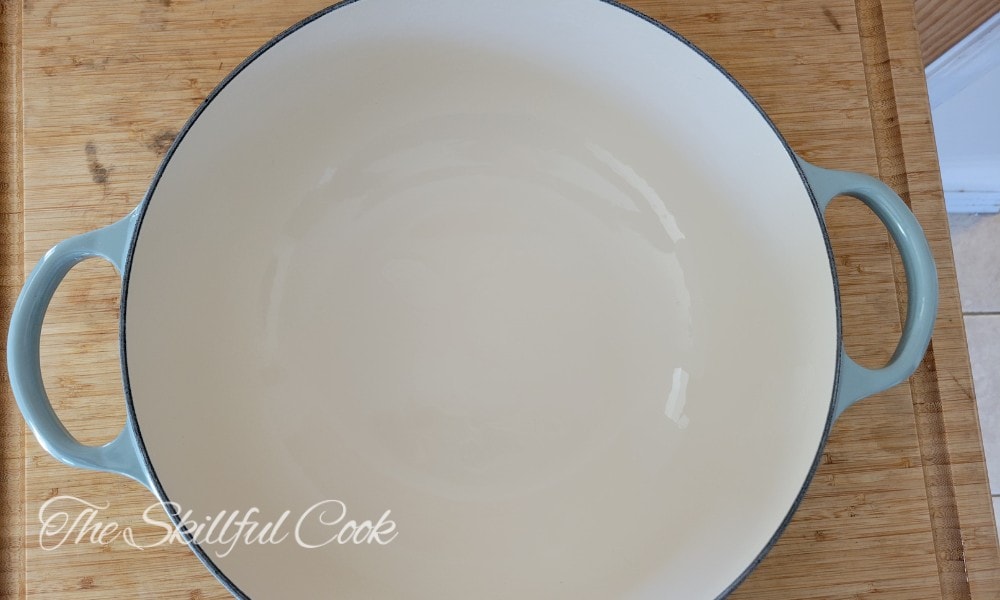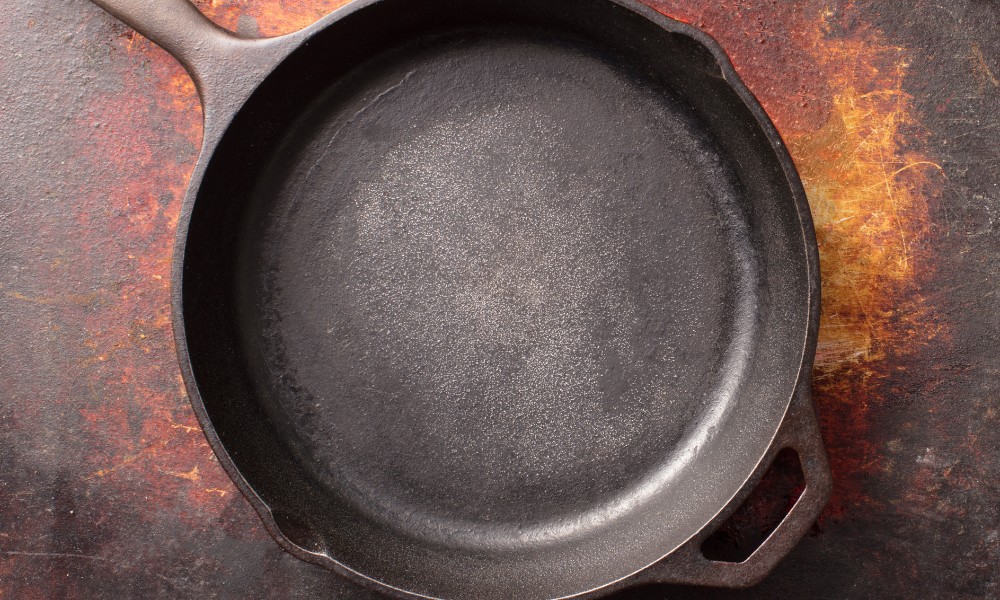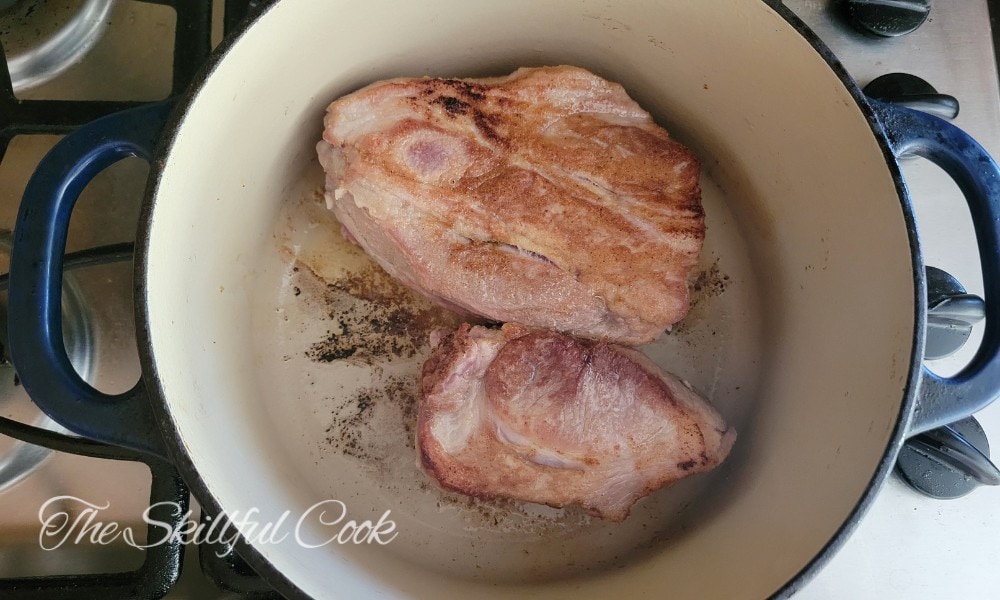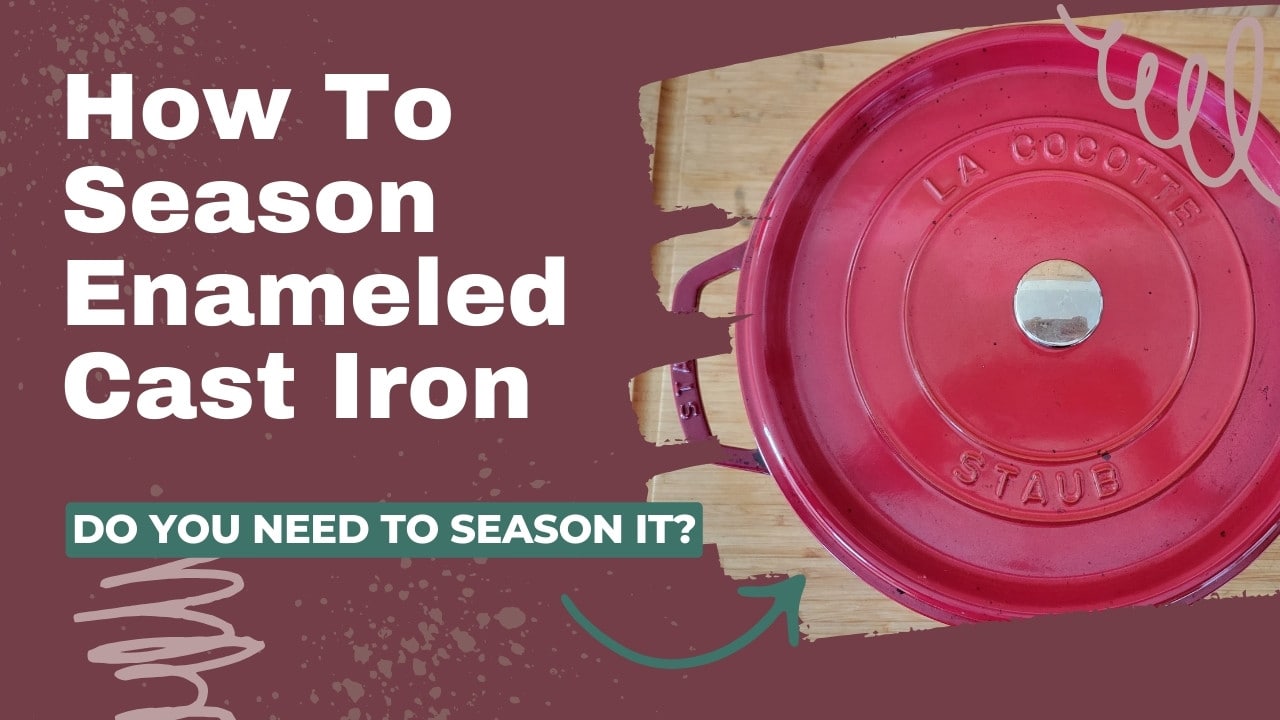If there’s one piece of cookware I can’t live without, it’s cast iron. It’s so versatile that I use it for cooking just about anything, from desserts to stews. I never get a chance to store it in the cabinet!
And when I feel like I need to combine elegance and convenience with healthy cooking, I take out my treasured enameled cast iron Dutch oven. Sometimes, out of habit, I feel like I need to season it like my regular cast iron cookware. But should you season enameled cast iron, too?
We’ll talk a bit about how to season enameled cast iron if you choose to do it – but there are a lot of reasons why you might want to reconsider.
Do You Need to Season an Enameled Cast Iron Pan?
No. You don’t need to season enameled cast iron since it already has a smooth, semi-nonstick porcelain surface. Oil won’t bond to enamel like it does to regular cast iron, so seasoning enamel cast iron won’t build the same hard, nonstick patina. In fact, trying to season cast iron may create a layer of sticky oil that makes your pan less nonstick.
Enameled Cast Iron vs. Natural Cast Iron – What’s the Difference?
If you look closely at your Le Creuset enameled cast iron pan, you may not see any resemblance to a bare cast iron skillet. Enameled cast iron has a glossy finish made of glass powder fused to the underlying cast iron surface. The enameled layer covers the pan’s interior and exterior in most products. It’s non-reactive and scratch-and-chip-resistant.

This glossy coating is super smooth – but not truly nonstick. Residue from stews and braised dishes wipe out easily, but if you’re using it on the stovetop, you will have to use some oil to keep food from sticking. When you’re done cooking with enameled cast iron, you should wash it totally clean, because any oil residue can harden into a nasty mess.
That’s what makes it so different from regular or “natural” cast iron pans that aren’t coated. Without the coating, cast iron is very porous and food sticks to it like nobody’s business. And so we do season regular cast iron cookware – like Dutch ovens.

Seasoning means baking a very thin layer of oil onto the surface of the metal. When heated, the oil bonds molecularly to the iron. As the layers of seasoning build up over time, cast iron becomes virtually nonstick. Building layers of seasoning on enameled cast iron is not only unnecessary – because the enamel is already smooth and nonporous – but virtually impossible to do in the same way, because oil won’t bond with the enamel as it does with bare iron.
Does Enameled Cast Iron Develop a Patina?
Good quality enameled cast iron with a smooth, nonporous surface won’t develop a patina if you try to season it. Some enameled cast iron pans and Dutch ovens, like the famous Le Creuset Signature Dutch Oven, have white enamel that, rather than developing a patina, will look all burned and blotchy if you try to season it. All maintenance and care steps that manufacturers recommend are for keeping this shiny look, not removing it.

Having said that, seasoning enameled cast iron is possible in two cases.
How To Season Enameled Cast Iron
So, if your enameled cast iron pan has some raw iron showing, or if the enamel coating is so damaged that seasoning may be your last shot at saving your pan, here’s a tutorial on how to do it.
Before seasoning your pan, ensure it’s clean and dry. If it has burned bits of food stuck to it, remove them by gentle scrubbing and boiling water with vinegar or baking soda. After washing, put the pan on low heat to dry it.
What You’ll Need for Seasoning a Pan
Seasoning Step-By-Step
- Pour a few drops of oil into the pan.
- Rub the oil into the pan using a paper towel.
- Remove all the excess oil and keep rubbing until you get a shiny surface.
- Put the pan in the oven at 425°F for 40-60 minutes.
Note. If you want to season only the bare cast iron parts, it’s safer to pour the oil on a paper towel and rub it on those parts. This will prevent the oil from dripping into the enameled parts.
If your seasoning is successful, it gets better over time. As you continue to use your enameled cast iron pan, more layers of polymerized oil will form on top of the first layer, giving you a nicely seasoned skillet or Dutch oven.
Conclusion
Not only is seasoning enameled cast iron unnecessary, but it may stain your cookware. Enameled cast iron – especially high-quality brands like Le Creuset – already has a smooth and shiny surface that’s semi-nonstick. Plus, unlike traditional cast iron, its smooth surface isn’t porous, so oils can’t bond with it. But if your pan is old, with the iron showing through, or has bare rims, you should season the exposed parts to prevent rusting.
Do you have enameled cast iron? Have you considered seasoning it? Share your thoughts with us, please!









